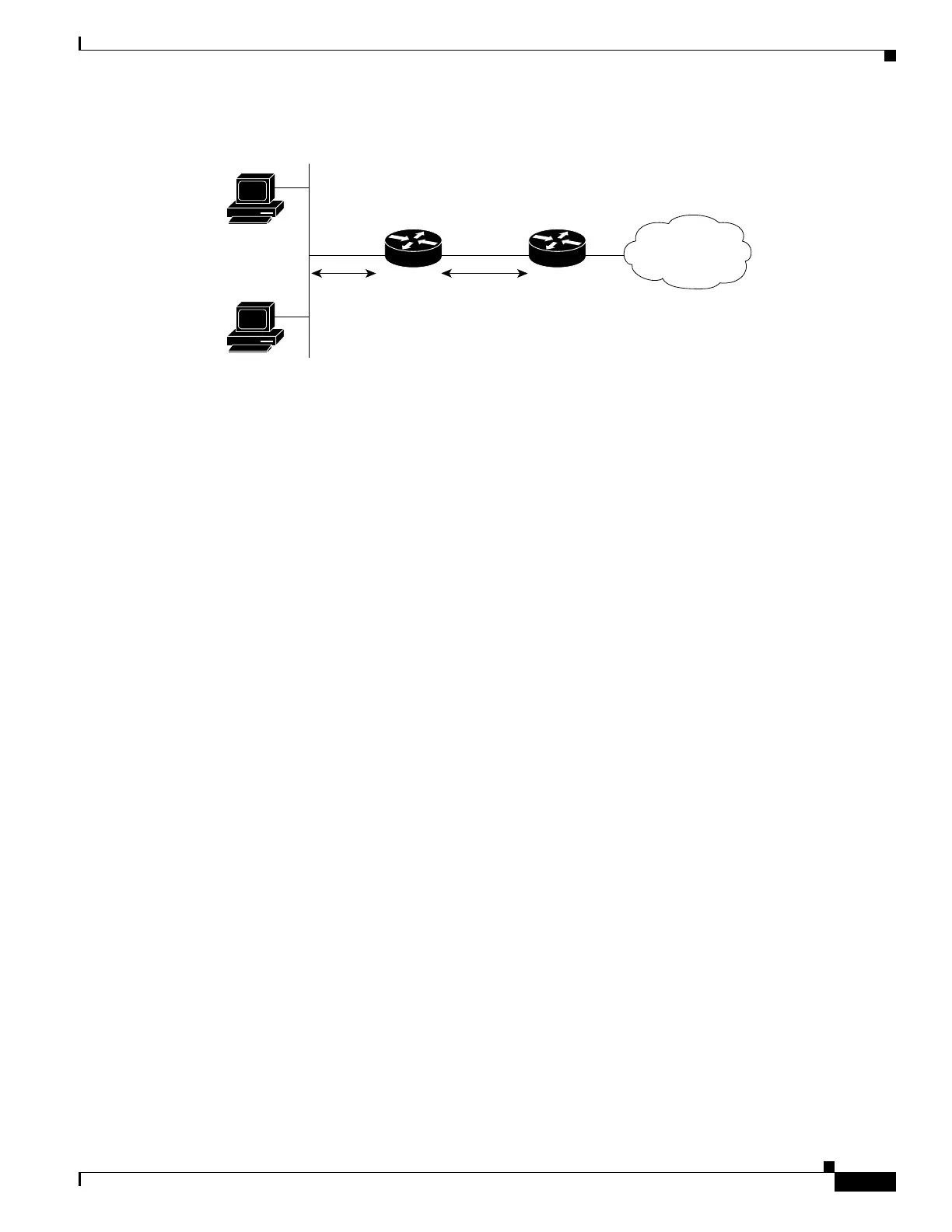37-3
Software Configuration Guide—Release IOS XE 3.6.0E and IOS 15.2(2)E
OL_28731-01
Chapter 37 Configuring IP Multicast
About IP Multicast
Figure 37-1 IP Multicast Routing Protocols
Internet Group Management Protocol
IGMP messages are used by IP multicast hosts to send their local Layer 3 switch or router a request to
join a specific multicast group and begin receiving multicast traffic. With some extensions in IGMPv2,
IP hosts can also send a request to a Layer 3 switch or router to leave an IP multicast group and not
receive the multicast group traffic.
Using the information obtained by using IGMP, a Layer 3 switch or router maintains a list of multicast
group memberships on a per-interface basis. A multicast group membership is active on an interface if
at least one host on the interface sends an IGMP request to receive multicast group traffic.
Protocol-Independent Multicast
PIM is protocol independent because it can leverage whichever unicast routing protocol is used to
populate the unicast routing table, including EIGRP, OSPF, BGP, or static route, to support IP multicast.
PIM also uses a unicast routing table to perform the reverse path forwarding (RPF) check function
instead of building a completely independent multicast routing table. PIM does not send and receive
multicast routing updates between routers like other routing protocols do.
PIM Dense Mode
PIM Dense Mode (PIM-DM) uses a push model to flood multicast traffic to every corner of the network.
PIM-DM is intended for networks in which most LANs need to receive the multicast, such as LAN TV
and corporate or financial information broadcasts. It can be an efficient delivery mechanism if active
receivers exist on every subnet in the network.
For more detailed information on PIM Dense Mode, refer to this URL:
http://www.cisco.com/en/US/docs/ios-xml/ios/ipmulti_optim/configuration/12-2sx/imc_pim_dense_rfr
sh.html
PIM Sparse Mode
PIM Sparse Mode (PIM-SM) uses a pull model to deliver multicast traffic. Only networks with active
receivers that have explicitly requested the data are forwarded the traffic. PIM-SM is intended for
networks with several different multicasts, such as desktop video conferencing and collaborative
computing, that go to a small number of receivers and are typically in progress simultaneously.
Catalyst 4500 series switch
Router
Internet
PIM
IGMP and
IGMP
Snooping
Host A
Host B
94150

